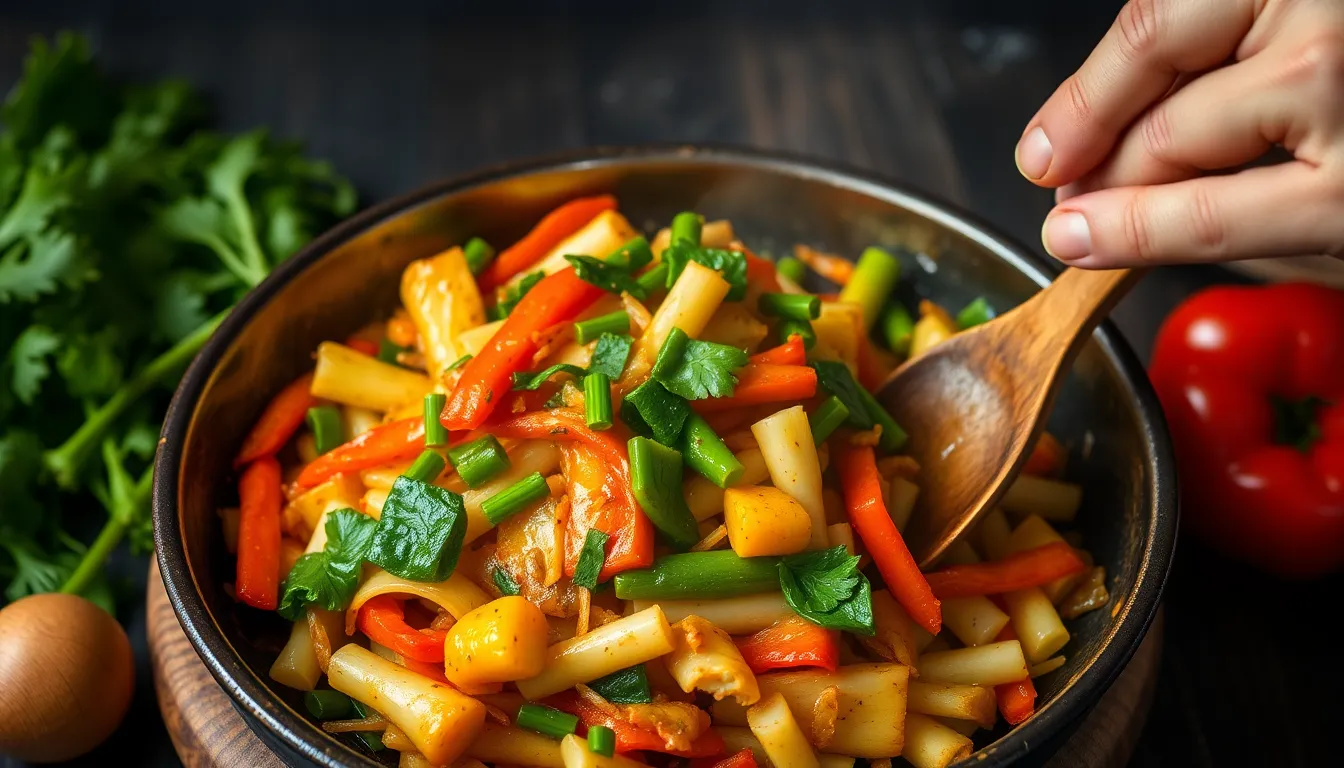The Perfect Pickle: How to Achieve the Right Crunch
Pickling is an age-old culinary technique that has gained immense popularity in recent years, thanks to its ability to enhance flavors and preserve seasonal produce. Whether you’re a fan of tangy dill pickles or sweet bread-and-butter varieties, the key to a satisfying pickle lies in its crunch. In this article, we will explore the science behind pickling, the selection of cucumbers, the perfect brine, and tips for achieving that coveted crunchiness. Get ready to dive deep into the world of pickles!
Section 1: Understanding the Science of Pickling
1.1 What Makes a Pickle Crunchy?
The crunchiness of a pickle is influenced by various factors, primarily the variety of cucumbers used, the acidity of the brine, and the fermentation process. Let’s break it down:
- Cucumber Varieties: Certain types of cucumbers, like Kirby or Persian, are known for their firm texture, which contributes to a satisfying crunch.
- Acidity and Brine Ingredients: The balance of vinegar and salt in the brine plays a crucial role in preserving the cucumber’s crispness.
- Fermentation Effects: While fermentation can enhance flavor, it may soften the texture; therefore, controlling the fermentation process is essential for maintaining crunchiness.
1.2 Key Factors Influencing Crunchiness
Several key factors influence the crunchiness of your pickles:
- Temperature During Brining: Cooler temperatures help maintain the firmness of cucumbers during the pickling process.
- Time of Pickling: The duration the cucumbers spend in the brine can significantly affect their texture.
- Cucumber Preparation Methods: Proper washing, cutting, and salting techniques are vital in achieving that desired crunch.
Section 2: Choosing the Right Cucumbers
2.1 Best Cucumber Varieties for Pickling
When it comes to pickling, not all cucumbers are created equal. Here are some of the best varieties to consider:
- Kirby Cucumbers: Firm and bumpy with a high water content, ideal for pickling.
- Persian Cucumbers: These smaller cucumbers are sweet and crunchy, providing a great texture.
- English Cucumbers: Long and slender, often seedless, these can also be used for pickles, though they may not be as crunchy.
2.2 Freshness Matters
To achieve the best results, selecting the freshest cucumbers is paramount:
- Tip for Freshness: Look for cucumbers that are firm, with a vibrant green color and no blemishes or soft spots.
- Storing Cucumbers: Keep cucumbers in the refrigerator, preferably unwashed, and consume them within a week for optimal freshness.
Section 3: The Perfect Pickling Brine
3.1 Basic Ingredients for Crunchy Pickles
The success of your pickles also depends on the brine. Here are the basic ingredients you should consider:
- Vinegar Types: Choose between white vinegar, apple cider vinegar, or rice vinegar depending on your flavor preference.
- Salt Options: Kosher salt is preferred for its purity and lack of additives. Sea salt is also a great choice.
- Sweeteners and Spices: Depending on your taste, you may want to add sugar, honey, mustard seeds, or dill.
3.2 Sample Pickling Brine Recipes
Below is a comparison table of different brine recipes, along with their ingredients and crunchiness ratings:
| Brine Type | Vinegar | Salt | Sweetener | Crispiness Rating |
|---|---|---|---|---|
| Classic Dill | White Vinegar | Kosher Salt | Sugar | High |
| Spicy Garlic | Apple Cider Vinegar | Sea Salt | Honey | Medium |
| Sweet Bread & Butter | White Vinegar | Table Salt | Brown Sugar | Low |
Section 4: The Pickling Process
4.1 Preparing Your Cucumbers
Preparation is key to achieving that perfect crunch. Follow these steps:
- Washing: Rinse cucumbers under cold water to remove any dirt or wax.
- Cutting Techniques: Slice cucumbers into spears, chips, or leave them whole, depending on your preference.
- Salting: Sprinkle salt on cut cucumbers and let them sit for about 30 minutes. This process draws out moisture and enhances crunchiness.
4.2 The Brining Process
Creating your brine is a straightforward process. Follow this step-by-step guide:
- In a saucepan, combine vinegar, water, salt, and any sweeteners or spices.
- Bring the mixture to a boil, stirring until the salt and sugar dissolve.
- Let the brine cool to room temperature before using it to ensure the cucumbers stay crisp.
4.3 Storing Your Pickles
How you store your pickles can greatly affect their crunchiness. Here are some best practices:
- Jar and Lid Preparation: Use sterilized jars and lids to prevent bacterial growth. Boil them for 10 minutes for proper sterilization.
- Storage Conditions: Store your pickles in a cool, dark place. If you intend to ferment them, check them regularly for signs of spoilage.
- Refrigeration: Once opened, store pickles in the refrigerator to maintain their firmness.
Conclusion
Creating the perfect pickle isn’t just about following a recipe; it’s a delightful blend of science and art. By understanding the factors that contribute to crunchiness, selecting the right cucumbers, and mastering the brining process, you can craft pickles that are not only flavorful but also satisfyingly crisp. Whether you’re a novice or an experienced pickler, the joy of biting into a crunchy pickle is a reward worth striving for. So gather your ingredients, embrace the process, and enjoy the delightful crunch of homemade pickles!




